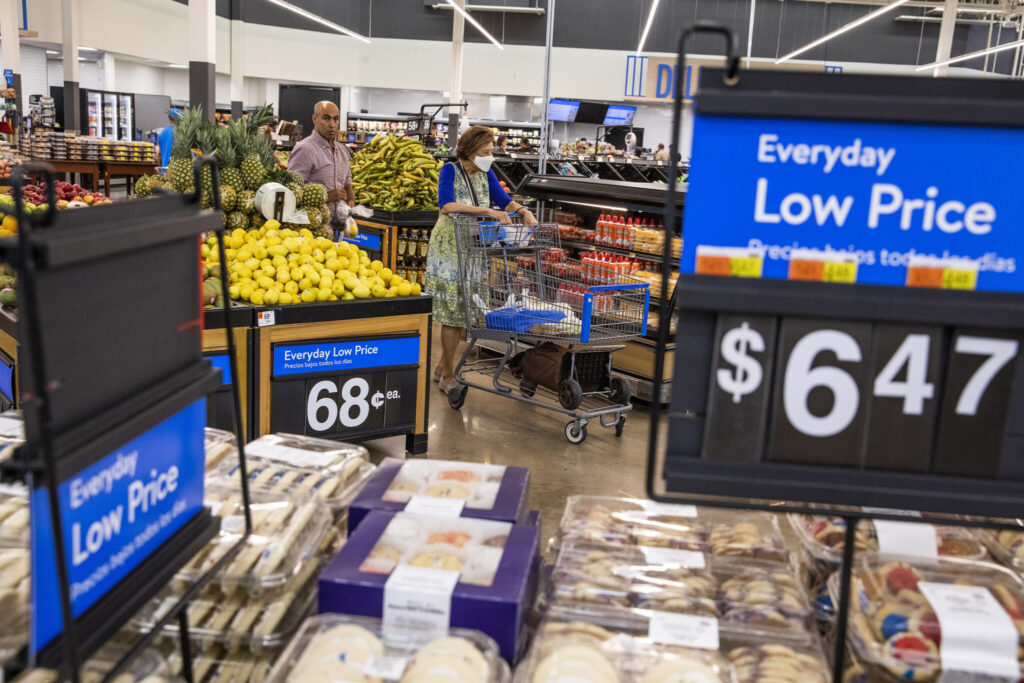US inflation 2024/ consumer prices September 2024/ core inflation/ Fed rate cuts/ election economic impact/ Newslooks/ WASHINGTON/ J. Mansour/ Morning Edition/ U.S. inflation dropped to its lowest level in three years, with consumer prices rising just 2.4% year-over-year in September. However, core inflation—which excludes volatile food and energy costs—remains elevated, driven by increases in healthcare and insurance. This cooling inflation, alongside positive job growth, could influence voter sentiment in the final stretch of the presidential campaign.

US Inflation Falls to Lowest Level Since 2021 – Quick Looks
- Inflation Rate: Consumer prices rose 2.4% in September, lowest since February 2021.
- Core Inflation: Core prices, excluding food and energy, remain high at 3.3%.
- Economic Growth: Strong job growth and a 3% GDP increase support economic stability.
- Election Influence: Decreasing inflation could impact voter opinions on economic leadership.
Inflation Hits 2.4% in September, Marking a Three-Year Low
Deep Look
Inflation in the United States has dropped to its lowest point since early 2021, with consumer prices rising 2.4% year-over-year in September, according to the Labor Department. This marks a continued slowdown as inflation pressures ease compared to the 2.5% increase seen in August. Monthly gains in consumer prices also held steady, up 0.2% from August to September, showing a more controlled inflation trend leading into the final stretch of the 2024 presidential race.
Despite this improvement, core inflation—which excludes volatile food and energy prices—remains elevated, with a 3.3% year-over-year increase driven by rising healthcare and car insurance costs. This metric is closely watched by economists as it often reflects longer-term inflation trends. Core prices rose 0.3% from August to September, and economists believe it could take further Fed measures to bring it in line with overall inflation targets.
Economic Stability as Election Approaches
The inflation slowdown accompanies a series of encouraging economic indicators, including strong job growth. Last week, government data showed that U.S. employers added jobs at a faster-than-expected rate in September, with unemployment falling slightly to 4.1%. The economy’s growth rate also stood at a solid 3% annualized rate in the second quarter, with forecasts suggesting a similar pace for the recently completed third quarter.
This positive economic news arrives as Vice President Kamala Harris and former President Donald Trump are locked in a close race for the White House. Harris has started to gain ground on Trump regarding economic leadership, according to recent polls. The economic data may challenge Trump’s edge on the economy, although overall public sentiment on economic conditions remains cautious.
Fed’s Approach to Interest Rates
The Federal Reserve faces a delicate balancing act, as the unexpectedly strong job market has raised concerns about whether the economy is cooling sufficiently to prevent future inflation spikes. After implementing a half-point rate cut last month—the first of its size in four years—the Fed is planning two additional quarter-point cuts through the year’s end. While Fed officials remain open to further cuts, they have cautioned against more aggressive reductions to avoid disrupting economic stability.
Dallas Fed President Lorie Logan addressed this sentiment on Wednesday, advising a gradual approach to rate reductions. “The Fed should not rush to reduce its benchmark rate but rather proceed gradually,” she said, reflecting the central bank’s commitment to carefully managing inflation without undermining economic growth.
Factors Fueling Inflation and its Recent Decline
After surging to a peak of 9.1% in June 2022, U.S. inflation began easing thanks to factors such as improved supply chains and steadier energy markets. Price pressures initially skyrocketed during the post-pandemic recovery as demand outpaced supply, a situation exacerbated by Russia’s invasion of Ukraine, which pushed up global energy and food prices.
Goldman Sachs economists project core inflation will fall to around 3% by the end of 2024, with minimal risk of resurgence barring significant Middle East conflicts that could destabilize global oil supplies. Inflationary pressures from food and gas remain a concern for many Americans, but wages have been growing at a faster pace than inflation, which may ease some household financial burdens. The Census Bureau reported that inflation-adjusted median household incomes rose 4% in 2023, returning to pre-pandemic levels.
Consumer Spending Shifts and Corporate Responses
In response to high food prices, U.S. consumers have adjusted their shopping habits, opting for generic or private-label brands and favoring discount stores over premium options. This shift has created added pressure on companies to moderate price increases, especially for consumer staples. PepsiCo, for instance, reported a decline in sales volumes after implementing significant price hikes on its snacks and beverages, underscoring the changing landscape for American consumer spending.
The Federal Reserve and economic analysts will continue to monitor price levels in the coming months as the economy stabilizes. With core inflation remaining high despite recent improvements, the Fed’s cautious approach to rate cuts reflects an ongoing effort to balance economic growth with inflation control. For many Americans, any further decrease in inflation will likely be a welcomed relief, especially in the run-up to the election, as the cost of living continues to shape public opinion and voter sentiment.







